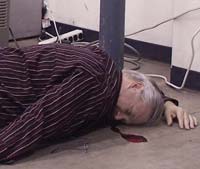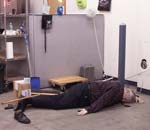
Buying an AED is Just the First Step
It is probably a mistake to invest most of your time trying to figure out which box to put on the wall while slighting other important elements of a successful program.
 For many organizations, buying automated external defibrillators (AEDs) is the purchase of a bigticket item. For most consumers, a car is a big-ticket item. But buying AEDs is not at all like buying cars, where the effort ends when you park it in your garage for the first time. From then on, all you need to do is drive it around and put oil in it.
For many organizations, buying automated external defibrillators (AEDs) is the purchase of a bigticket item. For most consumers, a car is a big-ticket item. But buying AEDs is not at all like buying cars, where the effort ends when you park it in your garage for the first time. From then on, all you need to do is drive it around and put oil in it.
AEDs, however, are very different. Installing multiple AEDs in your facilities will mean, of course, that you are going to shop around, investigate the market to find out who offers the best value, and install the best AED at the lowest price. At that point, however, the project has just begun. The passage of time for your AED program will be much like what some soldiers say combat is like: endless boredom punctuated by very short stretches of stark terror.
The test for your program will occur on that distant day when someone unexpectedly goes into cardiac arrest, becomes unresponsive, and looks dead. Suppose you are near the shipping dock in your facility. You hear a disturbing clatter and then a crash in the next room. You go to see what's up and find the scene shown in the picture, at right.
Man Down, Now What?
A man has collapsed. Let's assume he has no pulse and is in sudden cardiac arrest (SCA). What will you do? Get someone to help you, or take charge of the situation yourself? Either way, this man probably will die unless someone goes to the phone; calls 911 to get the ambulance with paramedics moving in your direction; takes the AED off the wall; brings it to the man down and turns his body over so he is face up; rips open his shirt so electrodes can be applied to his bare chest; turns on the AED; and follows the audio prompts. This will involve the AED doing an analysis of his heart's rhythm; standing clear and delivering a shock by pushing the button on the AED if required; and then starting cardiopulmonary resuscitation (CPR). If the AED advises no shock, then CPR must begin immediately and continue for as long as you and others around you have the strength.
Will anyone on the scene have the presence of mind—and the courage—to do all of this? It's not that hard, particularly for trained rescuers who can remember to call for help, get the AED, and do what it says after it's turned on. But will these few things happen with speed and precision? If so, your program will have been a success. Will your rescuers resuscitate the victim? The short answer: Maybe. No one should ever expect that a collapsed victim will bounce back to life if the rescuers just move quickly enough and push that shock button when told to.
Sudden cardiac arrest is a true killer. There are many reasons why a heart might stop, and some are insurmountable. Some victims cannot be resuscitated even if they were to collapse right next to an ambulance with paramedic and defibrillator on board. But without immediate attention, in the form of CPR and a defibrillating shock, the victim probably will become irretrievably dead in about 10 minutes.
Think 'Program,' Not 'AED'
Many AED program managers are tempted to get heavily involved in which AED they should purchase, thinking this decision is critical to success. For a car buyer, this would be like carefully investigating all of the engines on the market while ignoring the complete automobile to which each belongs. Engine technology does not differ that much from model to model. A Honda engine is not all that different from a Ford.
The various shocks delivered by AEDs on the market today are similar. Shock performance differences are trivial and probably well within the sensitivity of the testing procedures used to measure them. That is why the FDA has cleared them all for sale in the United States. Each does a fine job of delivering a shock, all of them in about 25 seconds.
It is probably a mistake to invest most of your time trying to figure out which box to put on the wall while slighting other important elements of a successful program. Focus instead on those few minutes of stark terror when it's time for someone in your program to take action to save a life.
Once you stop asking "What box will go on our wall?" and begin to wonder "What will a rescue be like for us?" you will face questions such as: Whom will we train to use the AED and to do CPR? How will we maintain the AED, its electrode pads, and batteries over the next decade? What will we do to support awareness of our program, our equipment, and our rescuers throughout our organization?
This more comprehensive approach will make you consider the importance of training. The previously shown "Man down, now what?" photograph should give you pause. Some AED salespeople claim their AED is so simple to use you do not need to train anyone. Don't believe them. No matter how simple the AED on your wall, the task before your rescuers is the same. They still need the presence of mind, the confidence, and the courage to act quickly and decisively. This won't happen if they aren't trained in the basics of what a rescue requires.
The Importance of CPR
You also will need to consider CPR as much as the AED. A few facts from the research make this clear. About half of all AEDs applied to victims find on the very first heart analysis that "no shock is advised."v At that point, only CPR can save the victim. Performed well enough, chest compressions on the victim's sternum at a rate of 100 per minute and 1½ to 2 inches deep—the rate and depth recommended by the American Heart Association (AHA)—can lead to a shockable heart rhythm on the next heart analysis. If your rescuers don't do good CPR, the chances of a victim's surviving cardiac arrest are slim to none.
But it's not only unshockable victims who need CPR. The AHA, in its most recent Guidelines2, points to research showing that once a fibrillating heart has been shocked, more than 60 percent of the time, it presents no organized heart rhythm a full minute later. Significant blood fl ow to the heart takes even longer.
Many people familiar with AEDs are not aware that a shock to the heart does not "restart" it, but "stuns" it. By bringing all electrical activity and muscle movement in the heart to a complete stop, a shock can allow the heart to begin reorganizing its electrical rhythm. This usually takes more than a minute after shock delivery. If the struggling heart is to succeed in reorganizing itself, it needs one thing more than anything else to help it get going: oxygenated blood for its starved inactive muscles!
This can be provided only by CPR after delivering the shock. A rescuer who attaches an AED, delivers a shock when told to, and then stands around waiting for the victim to regain consciousness may just be watching the victim die. The climax of a rescue that is part of your successful AED program will very likely be a minute or two of CPR, not the shock delivered at the beginning of the series that saves a life.
The manager of a comprehensive AED program, then, will not just consider which AED to put on the wall, but also will pay careful attention to maintaining the AED once installed, training rescuers to use the AED, and supporting any use of AED with good CPR.
This article originally appeared in the June 2009 issue of Occupational Health & Safety.